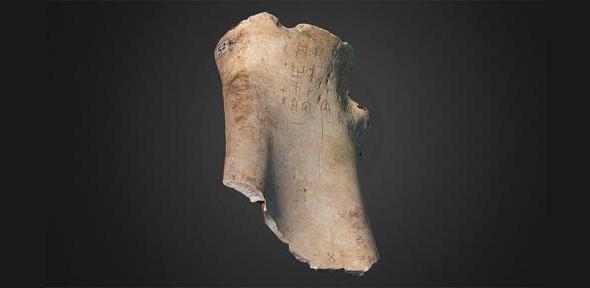
The earliest-known example of Chinese writing – written more than 3,000 years ago on the bones of an ox – has become the world’s first Chinese oracle bone to be scanned and printed in 3D thanks to a collaboration between Cambridge University Library and the Media Studio of Addenbrooke's Hospital.
The 3D image brings into sharp focus not only the finely incised questions on the obverse of the bone, but also the divination pits engraved on the reverse and the scorch marks caused by the application of heat to create the cracks (which were interpreted as the answers from the spirit world). 3D prints of precious items like this will enable students and researchers to obtain a ‘hands-on’ impression otherwise impossible for conservation reasons.
Charles Aylmer, Head of the Chinese Department at the Library, said: “Some of the bones have already been included in the Cambridge Digital Library, but now new technology provides readers around the world an even closer look at these precious artefacts.
“In what is believed to be a world first, one of the bones (which features in the 600th anniversary exhibition Lines of Thought) has been digitised in 3D thanks to the work of archaeologist Professor Dominic Powlesland, one of the leading pioneers in this area.”
The 3D copy of the oracle bone was made with a printer whose main function in the hospital is to assist in planning maxillofacial and orthopaedic surgery. The print comprises 350 superimposed layers of a fine powdered plaster compound hardened with cyanoacrylate (superglue).
Charles Aylmer added: “To hold a 3D print of an oracle bone is a very special experience, as it provides the same sensory impression as that obtained by the people who created them over three thousand years ago, but without the risk of harm to the priceless originals."
Click here to view the high-resolution image of the bone, which measures about 9x14cm, knitted together using 1.3 million aspects to allow a seamless view of its entire surface.
